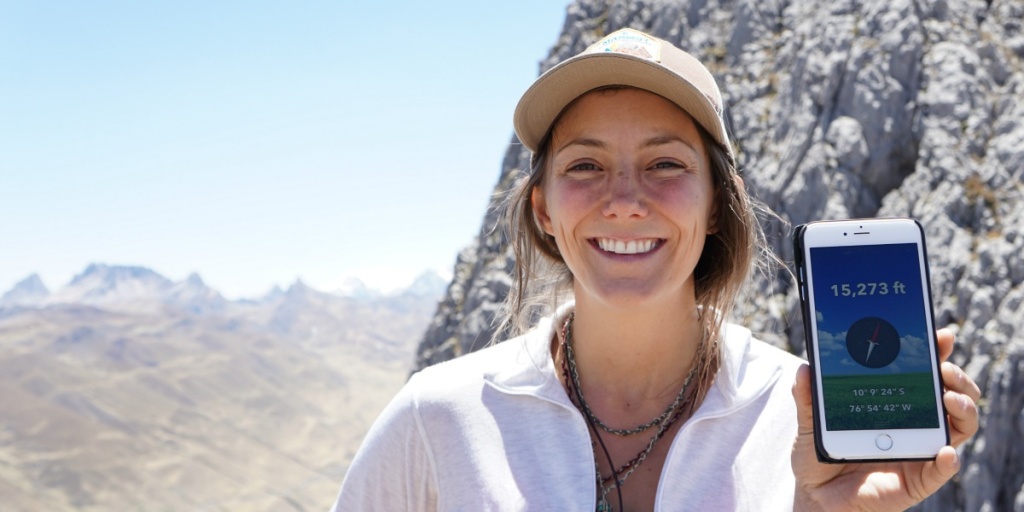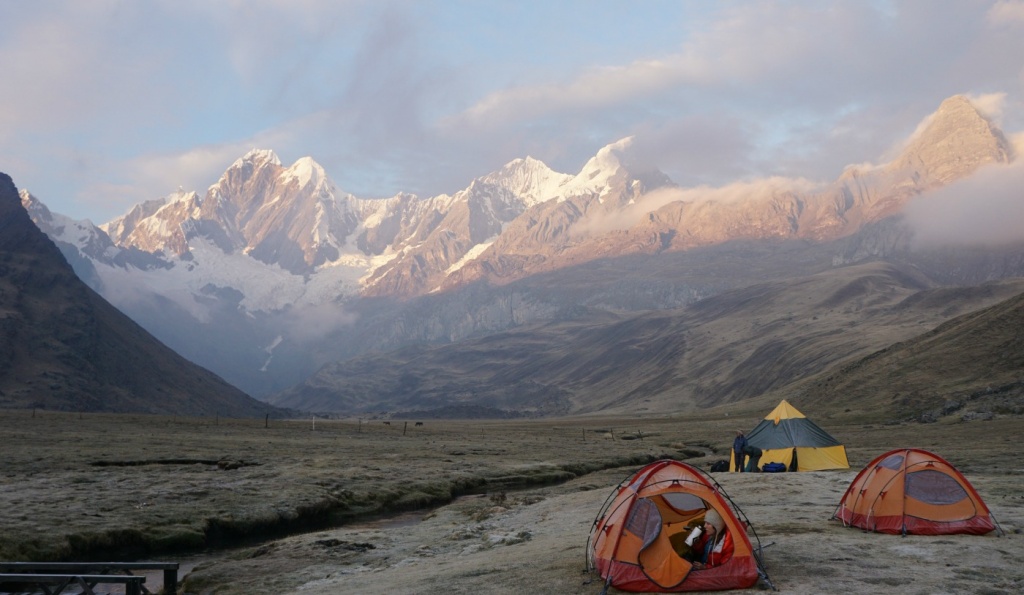Climber Pete Takeda recently spent several weeks climbing in the Peruvian Andes. He shares with us some thoughts on location scouting and taking photographs with frozen hands on a steep pitch.
Where were you climbing and what were the goals of the trip?
During late summer of 2015, I hopped on a plane to Peru and made my way to the Andes. My partner was a young climber named Emily Matherly. This was her first and my fifth adventure to an area offering Himalayan style climbing on a budget albeit in a smaller range. For those of you into model trains, think of it as HO scale expeditioneering. Having climbed in the popular Cordillera Blanca, I chose to go further south to the Cordillera Huayhuash. This compact complex of peaks up to 6700 meters offers steeper, more technically difficult terrain than the Blanca. It’s also less frequented.
The goal was simple: have an immersive expedition with a friend and climb whatever looked good. In places like the Huyhuash there are countless attractive routes to climb and plenty of first ascents.
How did you choose this spot to climb?
I like the choose-your-own-adventure approach to climbing mountains as much as big expeditions with brand-name objectives. I’m kinda core when it comes down to taking the road less travelled. Things stay spontaneous and I can pick a genre of climbing whether it’s bouldering, rock climbing or icy snowy stuff. As with all the great ranges, the remote Huayhuash fits the bill.
A select handful of mountains in any given range see the most impact as visitors concentrate on a handful of established, well traveled routes. But I like first ascents. I like exploration and I like adventure. Tripping through the unfamiliar, diminishes the chance of “success,” but discovery provides unalloyed inspiration.
What electronics do you use at your base camp? What do you use them for?
Between us, Emily and I had one iPad, two iPhones, a sat phone and a digital camera. We shot pics and video with the camera; Emily used her iPad as a Kindle; I store topos, maps and reference images on my iPhone. The gps and altimeter app are important in a practical sense.
What, if any, electronics do you bring on a single day climb?
On a day out I’d my iPhone as well as the digi camera. Once again, it’s imperative to keep things charged for gps, map and altimeter. We used the Voltaic Arc 20W Solar Charger and the V72 Laptop battery (now available with the upgraded V88 Battery Pack).
The V72 came along in the pack to Advanced Base Camp, even if we didn’t bring the charging panel. The battery is light — about the weight of a thick paperback book.
The V72 charges up in less than eight hours of sun with the Arc 20W even when overcast. A charged battery can juice a phone and all the camera batteries (I used a Sony A6000 with two spares). Conditions were mild by mountain standards. It didn’t get horribly cold but down to the teens. Battery worked fine under those conditions.
Do you plan what photographs you are going to take before you climb?
On big budget trips I generally have a photographer on board. In those cases — I leave the job to the pros. The Huayhuash trip was super lightweight so I did the shooting. Unless I have a specific goal I tend to shoot on the move. Sometimes I’ll set up a shot — wait for the right light and get into position, but usually I’m climbing so my options are limited. That said, I always want to bring back enough media whether there’s an article to write or folks to help out with images.
Do you have any advice for taking good photographs while climbing?
The hardest part is to stop, get the camera out and take the photo. It can be snowing, it might be really cold and your hands are freezing.
Action tends to move fast on an alpine climb. There’s a critical sense of urgency you don’t find in other forms of climbing. It’s really hard to stop, pull the camera out of your pack, figure the framing and exposure and all that much less get an an angle. It takes some discipline. Getting your partner to stop for a shot is also hard. Most situations end up as butt shots or the second following. So–if someone’s leading a big traverse, get the camera out and milk it!
About Pete:
Pete Takeda is an elite rock, ice and alpine climber. He’s competed in the ESPN Winter X-Games and climbed in Alaska, Canada, Iceland, Peru, Mexico, Australia and Scotland. He’s led nine expeditions into the Himalayas.
Takeda is author of three books including National Geographic: Climb! and An Eye At The Top Of The World. He’s written for Outside, Men’s Journal, Elevation Outdoors, Rock & Ice, Alpinist and Backpacker. Takeda, a long-time Marmot athlete, is sponsored by Upslope, La Sportiva, PMI Ropes, and Nutriex.
An Associate Member of the Writer’s Guild of America, Takeda has written, produced and narrated outdoor films and is credited co-producer and screenwriter on two in-development features. His favorite Voltaic gear is the V72 battery and Arc 20W Panel.







Leave a Reply